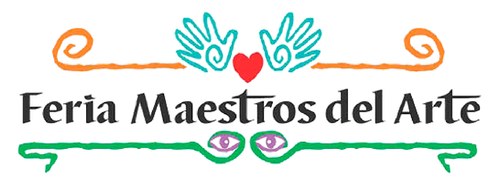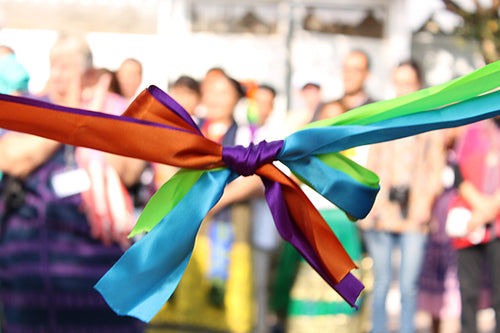
Oliverio Gómez Peréz Chenalhó, Chiapas
SPECIAL NOTE: Oliverio won First Place at the Concurso Estatal de Artesanías Fray Bartolomé de las Casas 2022 (judged art show in Chiapas) for his entry "Blouse — The universe" made in white linen, embroidered with cotton yarn, figures from the region of Santa Marta and using the Santa Marta, winding technique.
Oliverio Gómez Peréz comes from a small Tzotztil community nestled far away in the mountains in the municipality of Chenalhó, Chiapas. To get there you must go to San Andres Larrainzar, then take the road to Aldama and then take the dirt road leading to Santa Marta. A fairy tale countryside surrounds this quiet, isolated village. It is a challenge to reach in the rainy season or January and February when the area has thick fog.
The men are farmers and the women do embroidery to supplement the family income. They embroider their own blouses and also sell them in San Cristóbal de las Casas. While their neighbors in San Andres Larrainzar and Aldama are known for their weaving, the women of Santa Marta are known for their bordados (embroidery).
Oliverio was fascinated at a very young age by the embroidery his mother, Juliana, would do. He insisted she teach him how to embroider. He soon became so proficient that he is now one of
the finest embroiderers in the village. Several women have asked him to teach them his art. He is known for his very steady, regular, and fine stitches.
The designs include Maya symbols as well as flowers and geometric designs. Colors follow whatever is the current fashion, which right now is blue and purple.
Oliverio has formed a group of ten women to work with him who call themselves Tsisometik (the women who embroider).
He also embroiders linen Yucatán guayaberas. The origin of the guayabera is a bit of a mystery, thought to be the result of a mixture of Native American and Spanish styles, developed in the late 18th or early 19th centuries. Though commonly called guayabera, in Yucatán, Mexico, it is also known as camisa de Yucatán.
The guayabera shirt is distinguished by several details: either two or four patch pockets and two vertical rows of alforzas (fine, tiny pleats, usually ten, sewed closely together) running along the front and back of the shirt. The pockets are separately detailed with identical, properly aligned alforzas.
Grupo Tsisometik
Saclum
Santa Martha Municipio
Chenalhó, Chiapas
967 114 1891 WhatsApp

